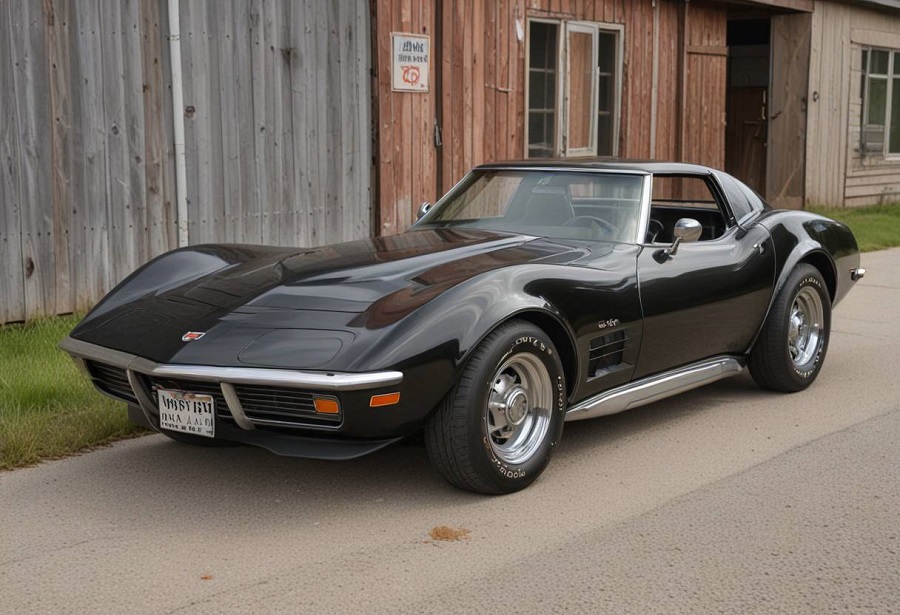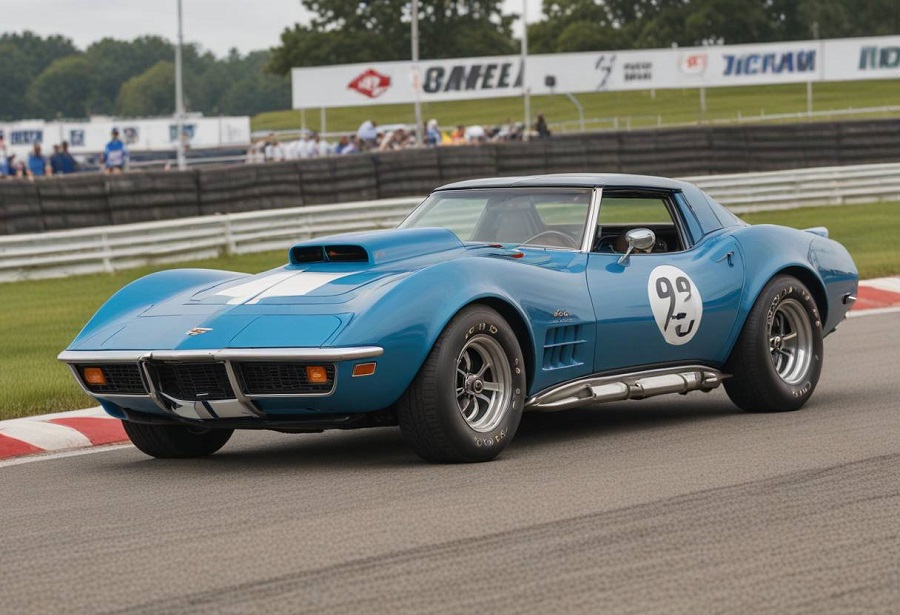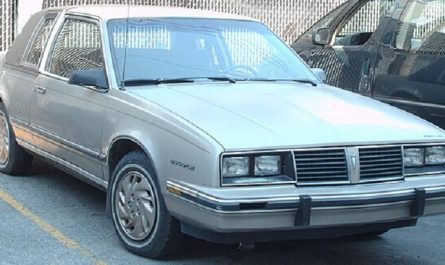Introduction to the 1971 Chevrolet Corvette
1971 Chevrolet Corvette belongs to the third generation (C3) of Corvettes, which were manufactured from 1968 to 1982. The C3 era was known for its striking design, often nicknamed the “Shark” body style, with its flowing curves and a low, assertive posture. The 1971 model year continued to uphold the Corvette’s reputation for high performance and cutting-edge design, delivering a combination of power and elegance that appealed to a broad spectrum of car enthusiasts.

The Design and Styling of the 1971 Chevrolet Corvette
The 1971 Chevrolet Corvette maintained the distinctive Stingray look from previous years, featuring a long hood, sculpted lines, and unique front and rear bumpers. Constructed from fiberglass, the body continued the Corvette’s tradition of using this material, providing improved performance and reduced weight compared to its all-steel counterparts.
Key Design Elements:
- Pop-up Headlights: One of the Corvette’s most iconic characteristics, contributing to a sleek front-end appearance.
- Chrome Accents: Chrome bumpers and side details that added to the car’s luxurious yet sporty look.
- Removable Roof Panels: The 1971 model still offered T-tops, allowing for a convertible-like feel without compromising structural strength.
Changes for 1971:
- Minor revisions were made to the front grille, and slight body adjustments were implemented to meet safety regulations without altering the overall look.
- Modifications to wheel options and minor trim updates further distinguished the 1971 model from previous years.
Engine Options and Performance
The 1971 Chevrolet Corvette had a reputation for its powerful engines, providing a variety of options to meet the needs of performance enthusiasts. It offered a selection of V8 engines, each delivering unique power and driving characteristics.
Variants of the Engines:
- Base Engine (270 hp, 350 cubic inches): A reliable performer that offered a blend of power and everyday usability.
- LT-1 Engine (330 hp, 350 cubic inches): A high-revving small-block V8 designed for individuals seeking a sporty driving experience.
- LS5 Engine (365 hp, 454 cubic inches): A big-block option that delivered impressive torque and straight-line speed.
- LS6 Engine (425 hp, 454 cubic inches): The most powerful engine available, turning the 1971 Corvette into a genuine muscle car.
Interior Features and Comfort
The 1971 Chevrolet Corvette had a driver-centric interior that seamlessly combined luxury and sporty elements. The seats were crafted for both comfort on long drives and energetic driving support.
Interior Highlights:
- Dashboard Design: The classic dual-pod gauge cluster showcased essential information like speed, RPM, and more.
- Upholstery Choices: Buyers had the option of vinyl or leather, enabling them to personalize their Corvette’s interior according to their preferences.
- Radio Options: The standard audio setup included AM/FM, with the possibility of upgrading to an 8-track player, demonstrating the technological progress of that time.
In 1971, air conditioning could be added as an option, catering to the increasing preference for comfort among buyers and further enhancing the Corvette’s image as a high-performance vehicle and a pleasant cruiser.
Exterior Design
The 1971 model perfectly captured the essence of the Corvette’s association with the Stingray name. Its unique shape, aggressive lines, and low stance distinguished it from its contemporaries, further solidifying the Corvette’s position as a cultural icon.
Taking inspiration from the 1965 Mako Shark II concept car, the design featured sleek curves and aerodynamic elements that not only enhanced its visual appeal but also boosted its performance. The Stingray emblem displayed proudly on the fenders served as a tribute to the car’s heritage, serving as a constant reminder to owners of the Corvette’s extensive history in American motorsports.
Handling and Driving Experience
The 1971 Chevrolet Corvette was praised for its handling characteristics, thanks to its independent rear suspension, rack-and-pinion steering, and well-balanced chassis. While not as nimble as some European competitors, the Corvette delivered a smooth ride with ample road feedback, making it a joy to drive on both highways and winding roads.
Driving Dynamics:
- Suspension: Features like front and rear anti-roll bars and improved suspension geometry provided excellent cornering abilities.
- Braking: Four-wheel disc brakes were standard, offering reliable stopping power.
- Steering: The manual steering provided precise control, although a power steering option was available for those preferring a lighter touch.
These attributes made the 1971 Corvette a versatile performer, equally capable on a weekend race track as it was on a daily commute.
Paint and Color Options
The 1971 Chevrolet Corvette came in a variety of striking colors, all contributing to the car’s visual appeal. Popular hues included Mille Miglia Red, Sunflower Yellow, and War Bonnet Yellow, each representing the bold and vibrant spirit of that time period.
Rare Colors:
- Bridgehampton Blue: A rare color highly sought after by collectors today.

- Steel Cities Gray: A distinctive choice that provided the Corvette with a more refined and elegant appearance.
These color choices allowed purchasers to further customize their cars, ensuring that each Corvette truly reflected its owner’s individual style.
Safety Features of the 1971 Chevrolet Corvette
During the early 1970s, safety was becoming an increasing concern in the automotive industry, leading the 1971 Corvette to incorporate several features focused on protecting its occupants.
Key Safety Features:
- Standard Lap and Shoulder Belts: Offering additional protection for both the driver and passenger.
- Energy-Absorbing Steering Column: Engineered to minimize injury during a collision.
- Enhanced Visibility: The strategically positioned mirrors and expansive glass areas improved the driver’s sight of the road.
These safety enhancements, in conjunction with the car’s sturdy construction, contributed to making the 1971 Corvette a comparatively secure choice among performance cars of its era.
Price of 1971 Chevrolet Corvette
The Corvette was marketed as a high-end sports car in 1971, priced at approximately $5,500 to start. This cost positioned it higher than numerous other American cars at the time but lower than certain European sports cars, presenting an appealing choice for individuals in search of both performance and style at a relatively affordable price point.
Currrent market value of 1971 Chevrolet Corvette: Prices vary widely, with well-maintained base models starting around $40,000, while rare, fully restored high-performance variants can exceed $150,000.
Conclusion
The 1971 Chevrolet Corvette is still adored as a timeless classic that embodies the essence of American muscle and style. Featuring a striking design, formidable engine choices, and a lasting influence on popular culture, the 1971 Corvette continues to charm fans and collectors. Whether you are attracted to its performance legacy, gorgeous appearance, or the sentimental allure of cruising in a legendary piece of automotive history, the 1971 Corvette is a vehicle that consistently leaves a lasting impression.
FAQs
Q1: How fast can a 1971 Corvette go?
A1: The top speed varies depending on the engine, but models equipped with the LS6 engine could reach speeds of up to 160 mph.
Q2: How many 1971 Corvettes were made?
A2: Chevrolet produced approximately 21,801 units in 1971, including both coupes and convertibles.
Q3: What is the rarest 1971 Corvette?
A3: The LS6 model with the 454 cubic inch engine is among the rarest and most valuable, with only a handful produced.
Q4: What kind of fuel does a 1971 Corvette use?
A4: Originally, the 1971 Corvette was designed to run on leaded gasoline. However, many have been modified to run on unleaded fuel.
Q5: How can I tell if a 1971 Corvette is original?
A5: Authenticity can be verified through matching VIN numbers, engine codes, and original documentation such as the build sheet or dealer invoice.
Q6: Are 1971 Corvettes good for daily driving?
A6: While they can be used as daily drivers, they lack modern conveniences and safety features, so they are best suited for occasional use.


